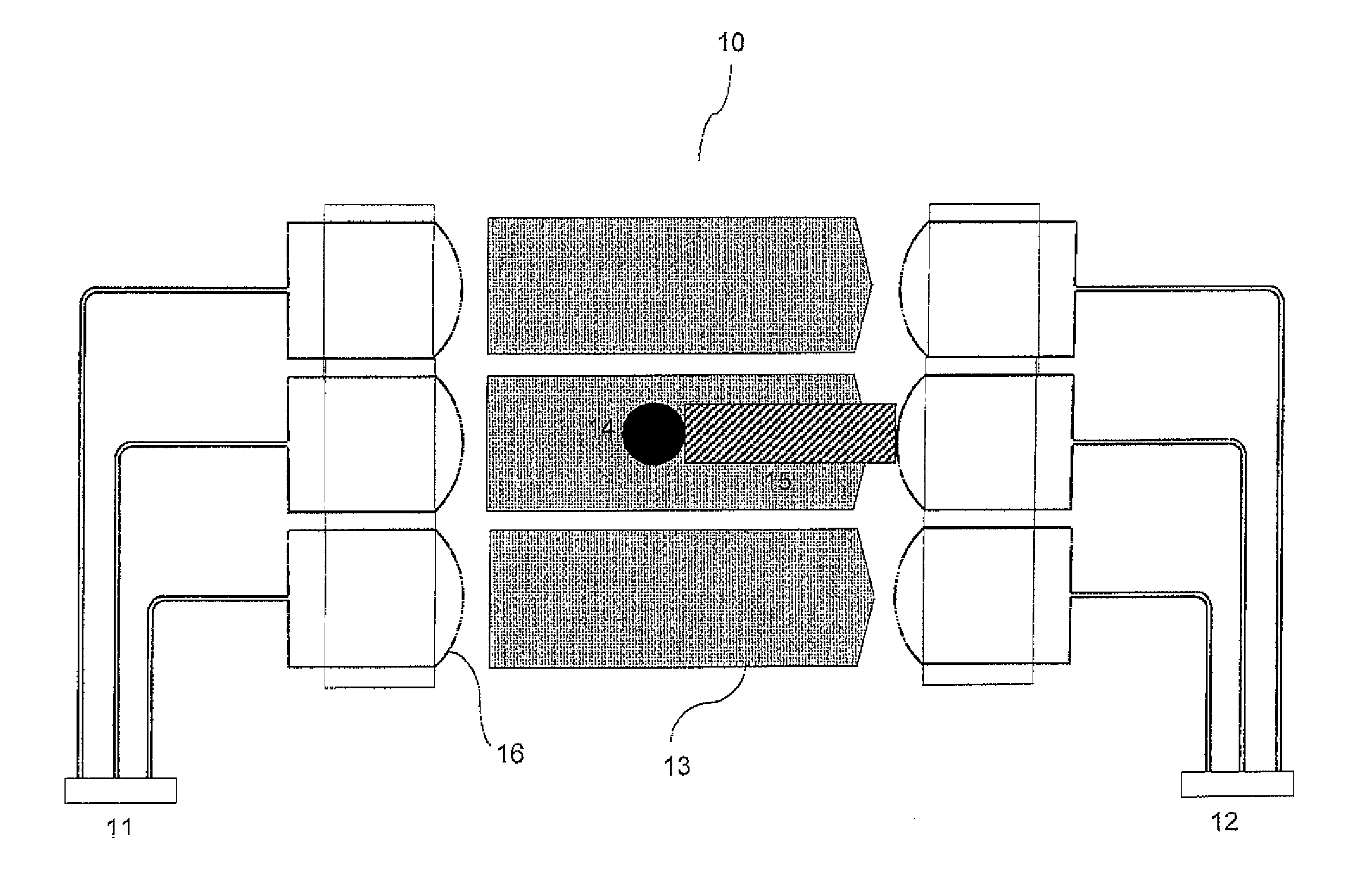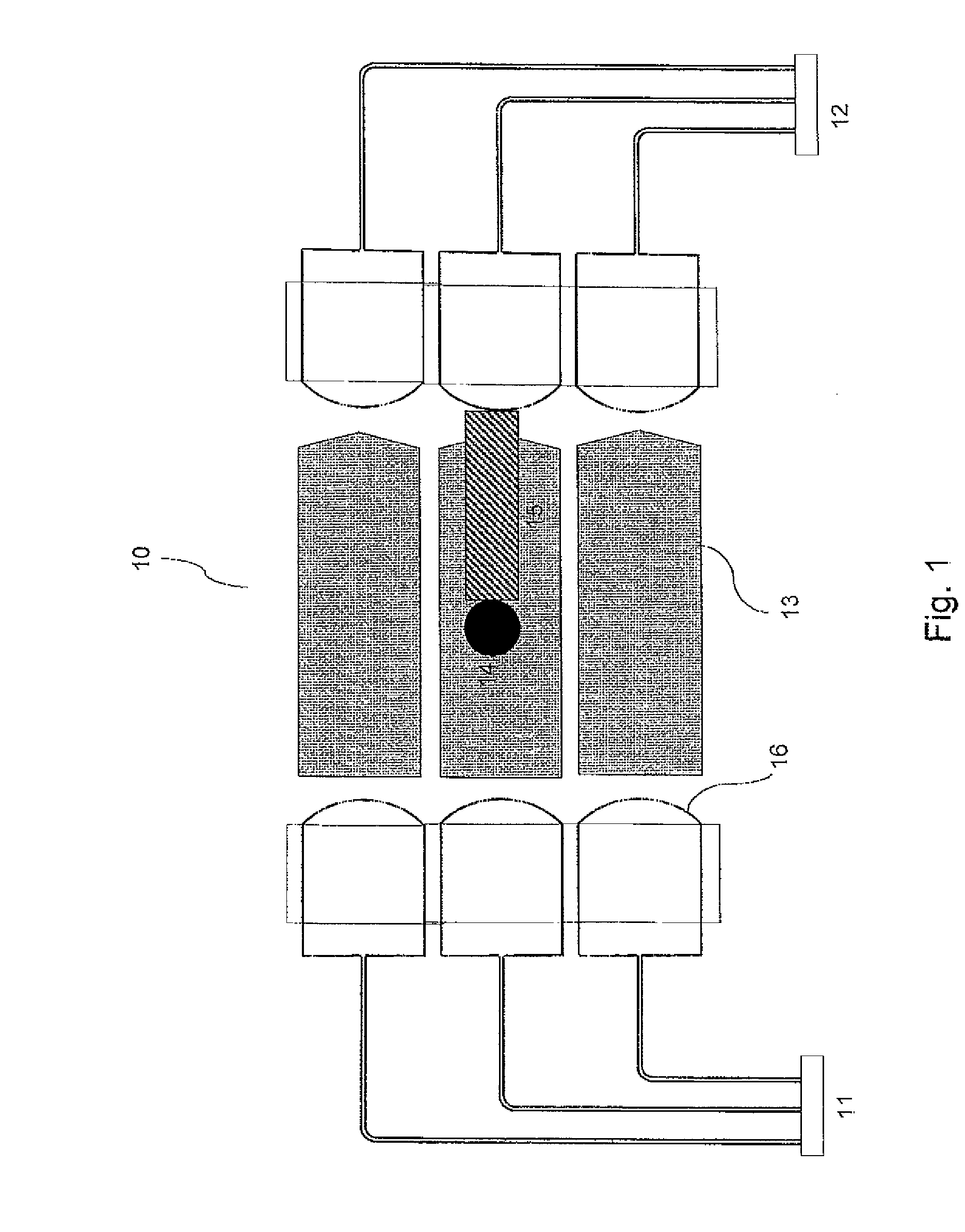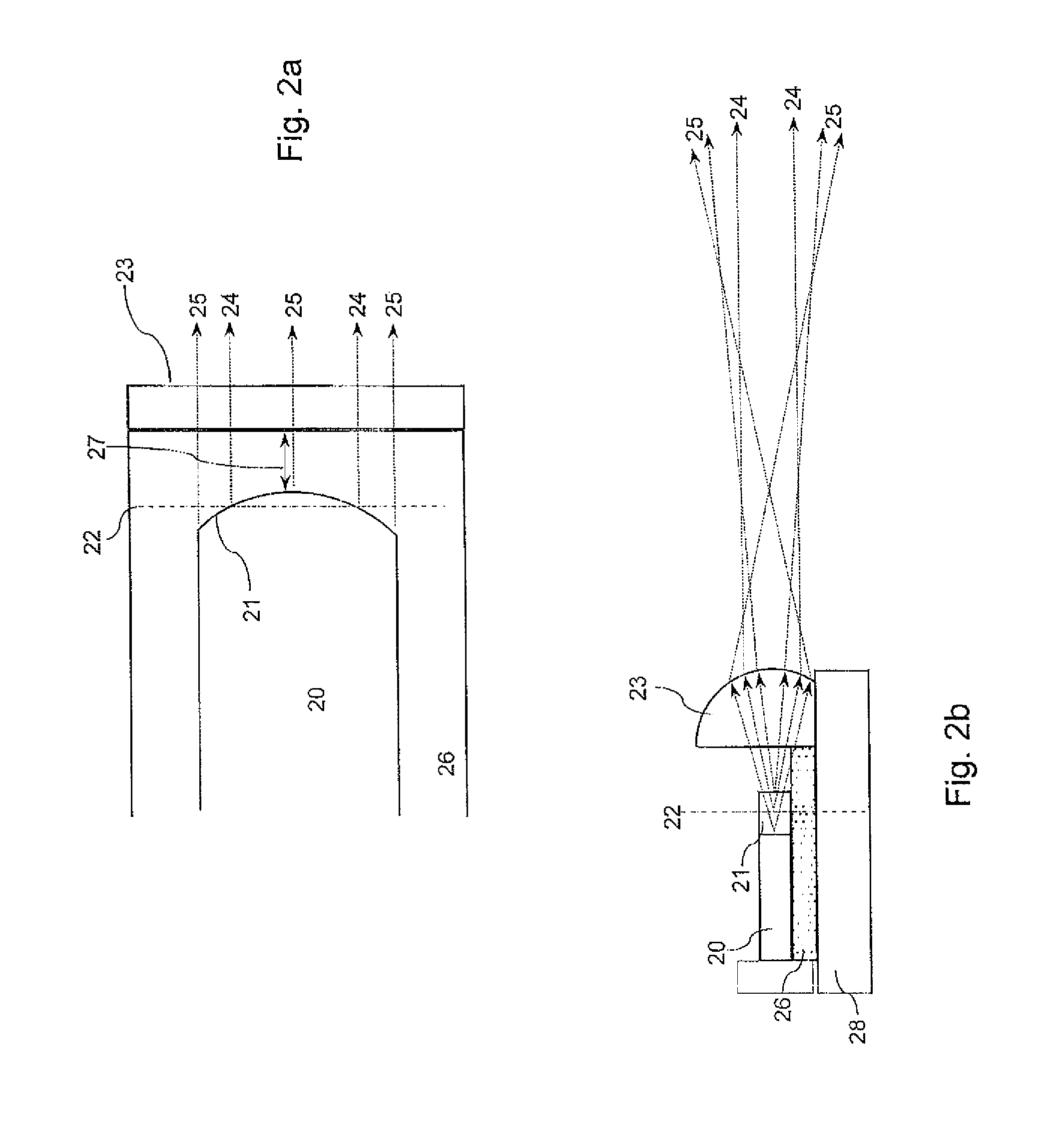Planar waveguide lens design
a waveguide and lens design technology, applied in the direction of optical waveguide light guide, instruments, computing, etc., can solve the problems of affecting the accuracy of inter-layer registration, and being difficult to control, so as to improve the mechanical robustness, less susceptible to stray light, and the effect of reducing the risk of light escaping
- Summary
- Abstract
- Description
- Claims
- Application Information
AI Technical Summary
Benefits of technology
Problems solved by technology
Method used
Image
Examples
example 1
[0071]Following the procedure disclosed in U.S. Pat. No. 6,818,721, a lower refractive index polymer A was prepared with a viscosity of 2500 cP (at 20° C.) and a refractive index (measured at 20° C. on an Abbé refractometer with room light) of 1.483. A higher refractive index polymer B was prepared with a viscosity of 2200 cP (at 20° C.) and a refractive index of 1.509 (at 20° C.). A suitable photoinitiator was added to both polymer A and polymer B
[0072]Polymer A was spin coated onto silicon wafer 40 and cured with UV light from a mercury lamp, to form lower cladding layer 41 with thickness 20 μm and refractive index 1.485 (at 20° C. and 850 nm). Polymer B was spin coated onto lower cladding layer 41 to form core layer 42, and patterned with UV light through a mask. The unexposed polymer B material was then dissolved in isopropanol to form input waveguide 31 and transmit element 30 incorporating converging lens 35 composed of air. Exposed core layer 42 had thickness of 11 μm and a r...
example 2
[0076]FIG. 5 shows a transmit element 30 according to the first embodiment of the invention, containing a plano-concave lens 50 comprising a concave front surface 51 and a planar back surface 52. In this example, plano-concave lens 50 is composed of air and extends across the full width of polymer slab waveguide region 33, thereby splitting it into first slab waveguide region 53 and second slab waveguide region 54. Such a design may be advantageous for a wet development fabrication process, to aid the passage of solvent and the removal of unexposed material. It will be appreciated that second slab waveguide region 54 allows end face 38 to be straight but has no focusing function, and can therefore be of any length. For example it may be made arbitrarily short to minimise the overall length of transmit element 30. In practice, second slab waveguide region 54 should have a length 55 of at least 30 μm, to allow sufficient margin for the dicing process that forms end face 38. To minimis...
example 3
[0079]FIG. 7 shows another transmit element 30 according to a first embodiment of the invention, containing bi-concave lens 70 composed of air and comprising concave front surface 71 and concave back surface 72. Bi-concave lens 70 extends across the full width of polymer slab waveguide region 33, splitting it into first slab waveguide region 73 and second slab waveguide region 74. Concave front surface 71 is designed to be an are of a circle centred on point 34, so that light rays emanating from this point encounter front surface 71 at normal incidence and pass through without being refracted. The light rays then encounter concave back surface 72, which is designed to collimate them into output rays 75. In another well known result of geometrical optics (“Optics”, E. Hecht, 2nd ed, Addison-Wesley (1987), p. 129-132), if light rays emanating from a point source in a medium of lower refractive index n1 pass into a medium of higher refractive index n2 through a hyperboloidal interface,...
PUM
 Login to View More
Login to View More Abstract
Description
Claims
Application Information
 Login to View More
Login to View More - R&D
- Intellectual Property
- Life Sciences
- Materials
- Tech Scout
- Unparalleled Data Quality
- Higher Quality Content
- 60% Fewer Hallucinations
Browse by: Latest US Patents, China's latest patents, Technical Efficacy Thesaurus, Application Domain, Technology Topic, Popular Technical Reports.
© 2025 PatSnap. All rights reserved.Legal|Privacy policy|Modern Slavery Act Transparency Statement|Sitemap|About US| Contact US: help@patsnap.com



